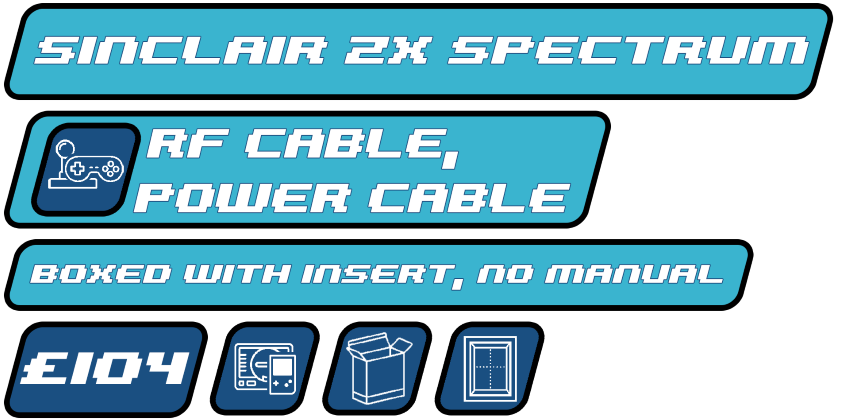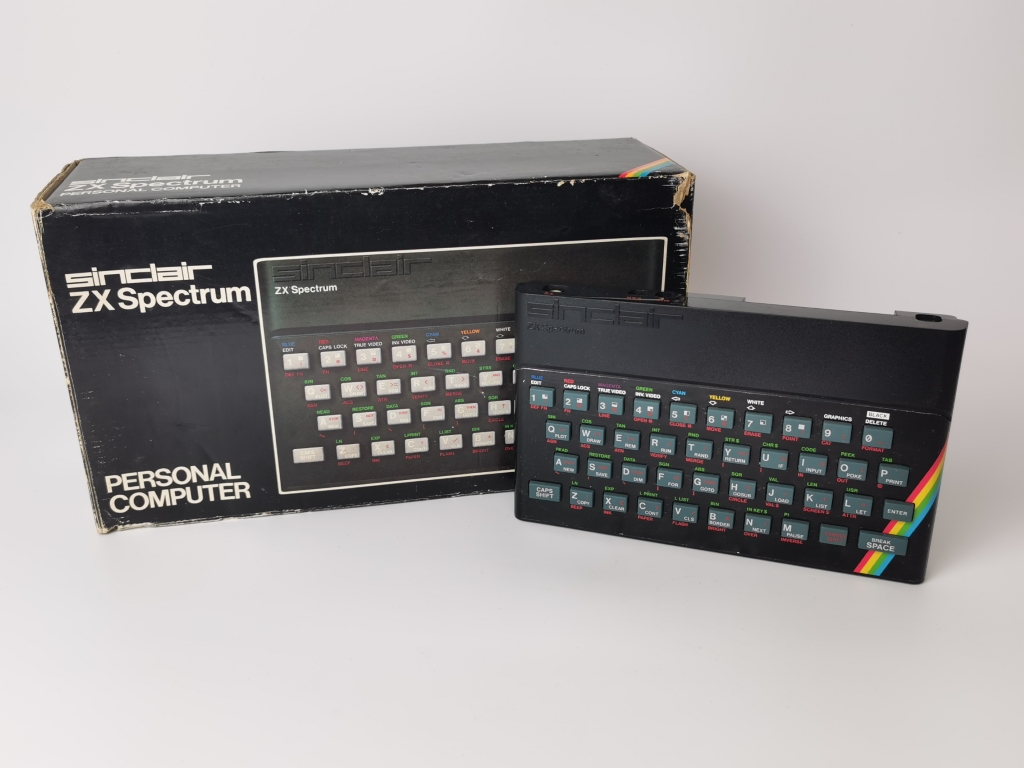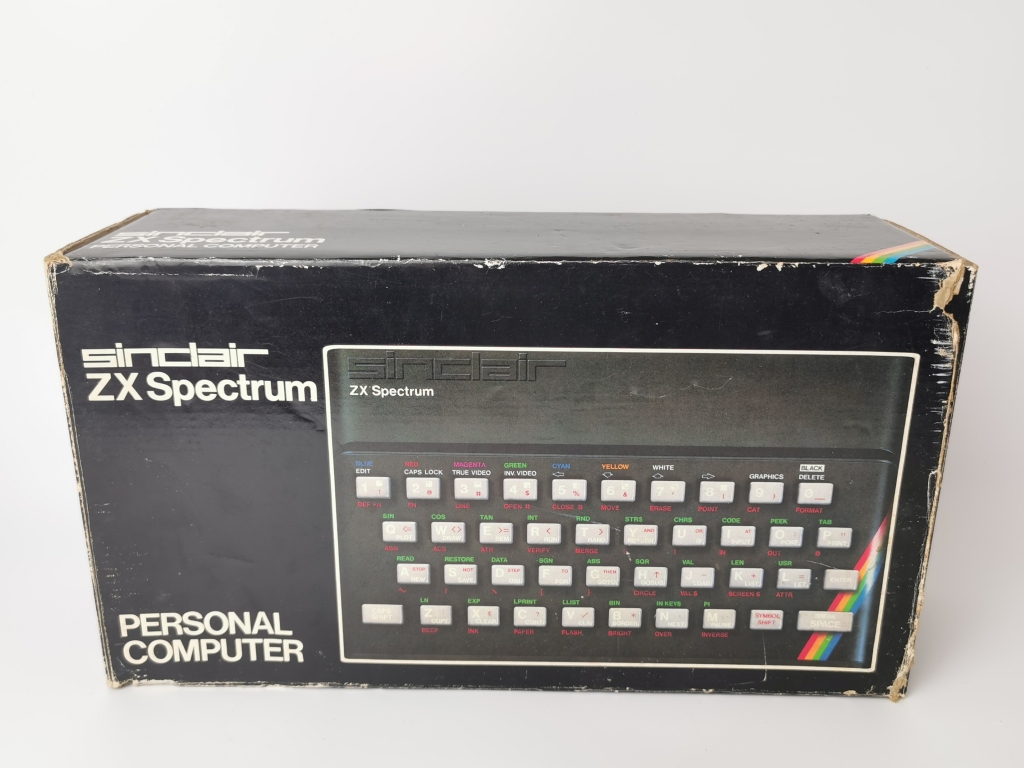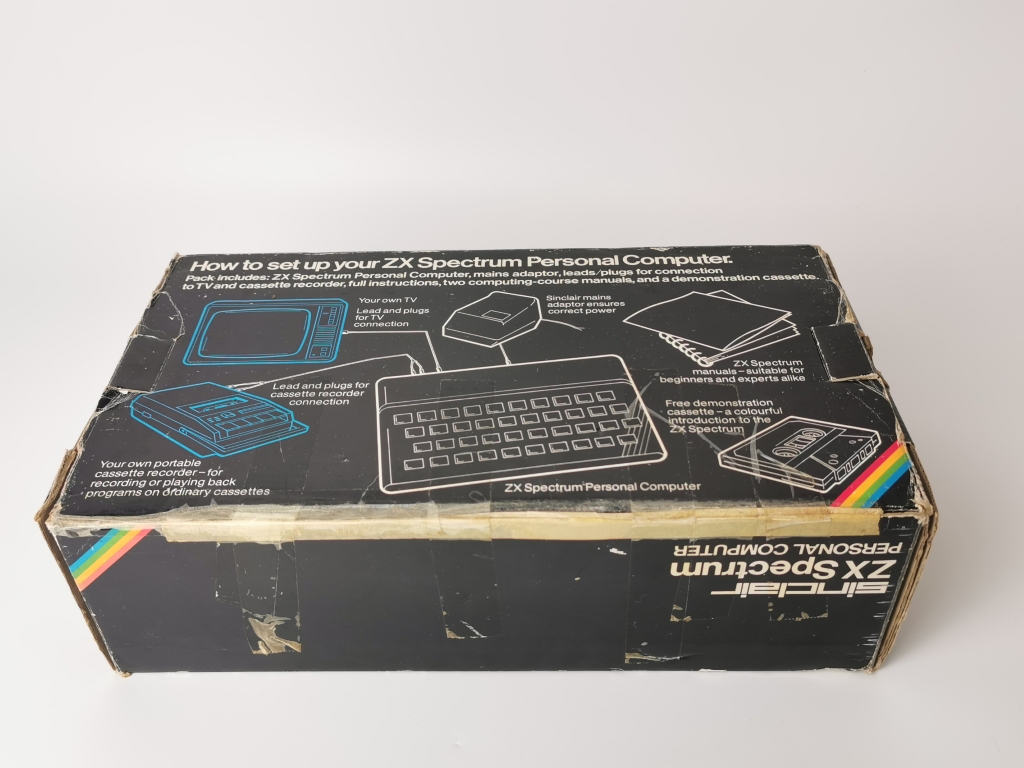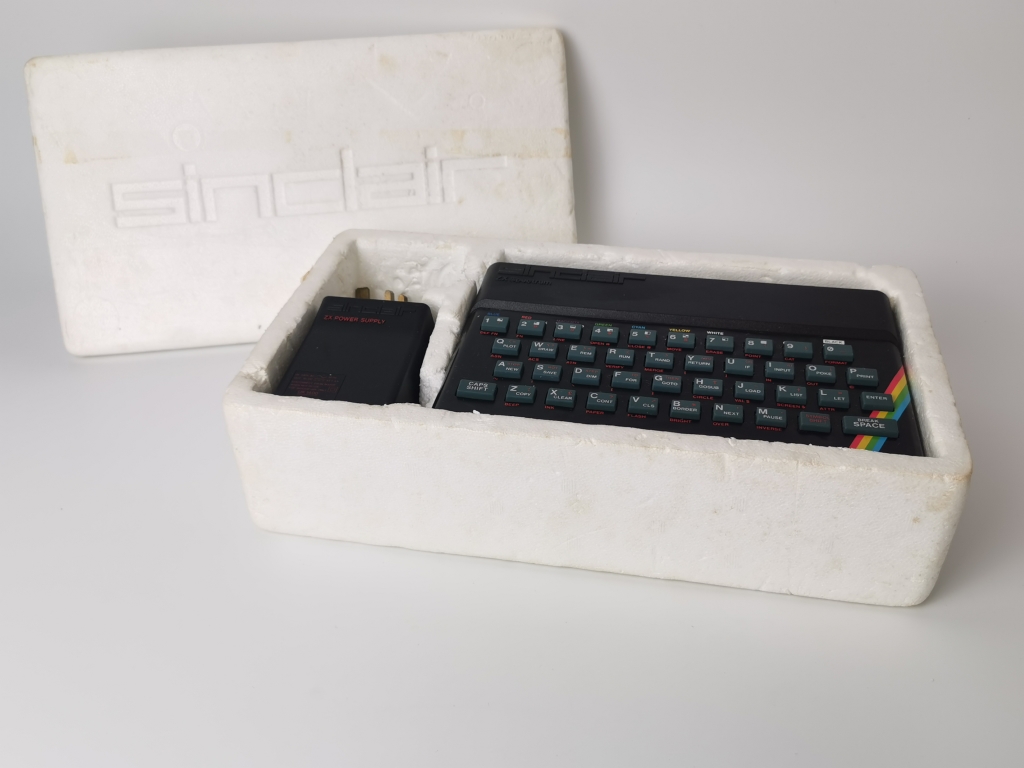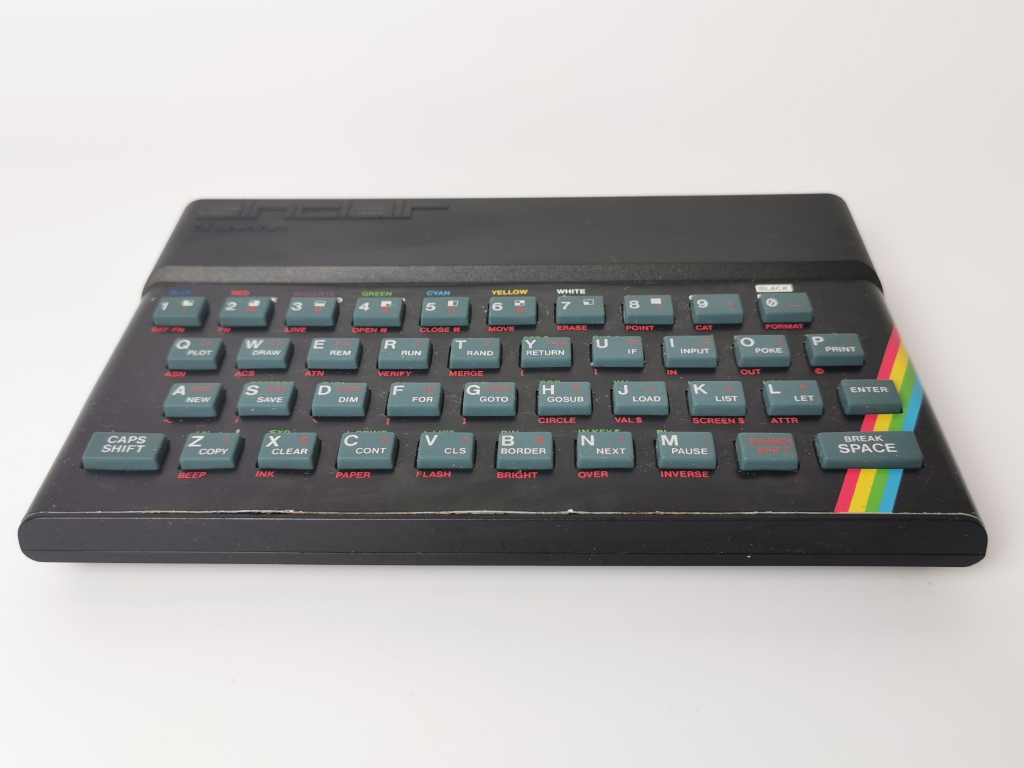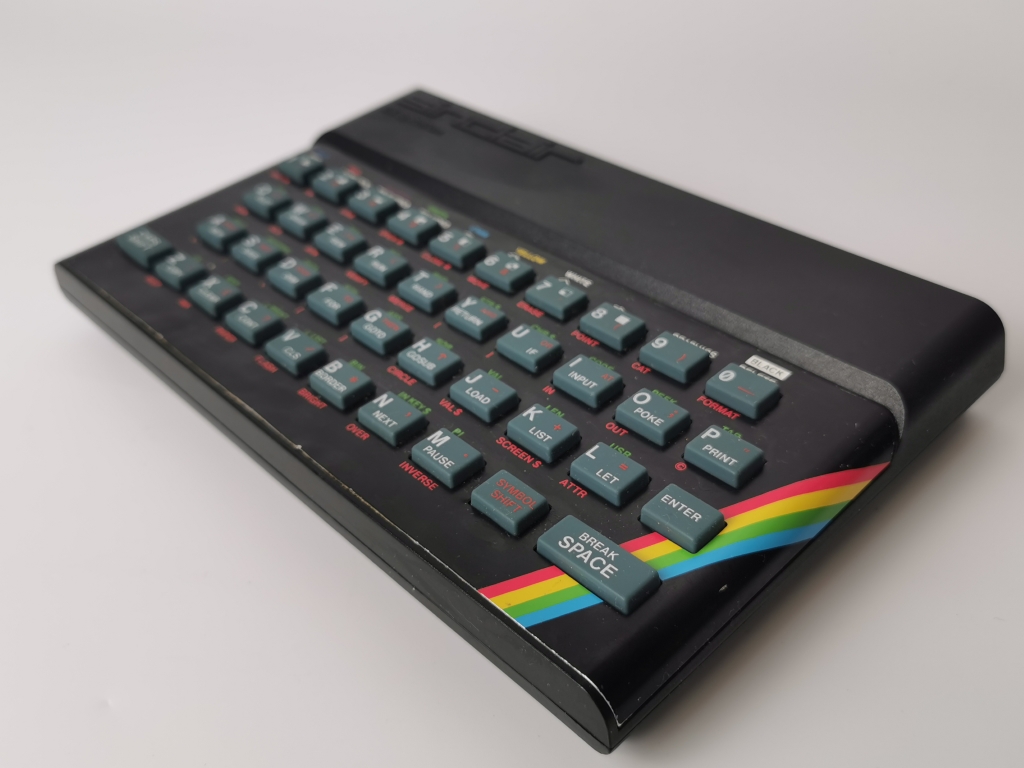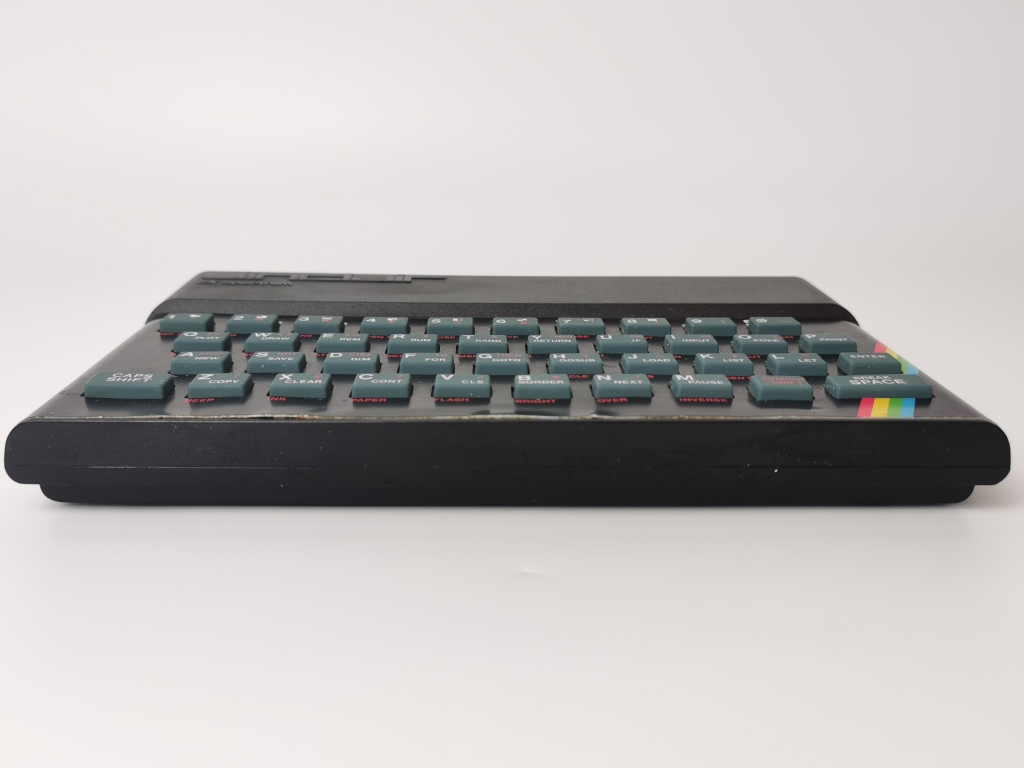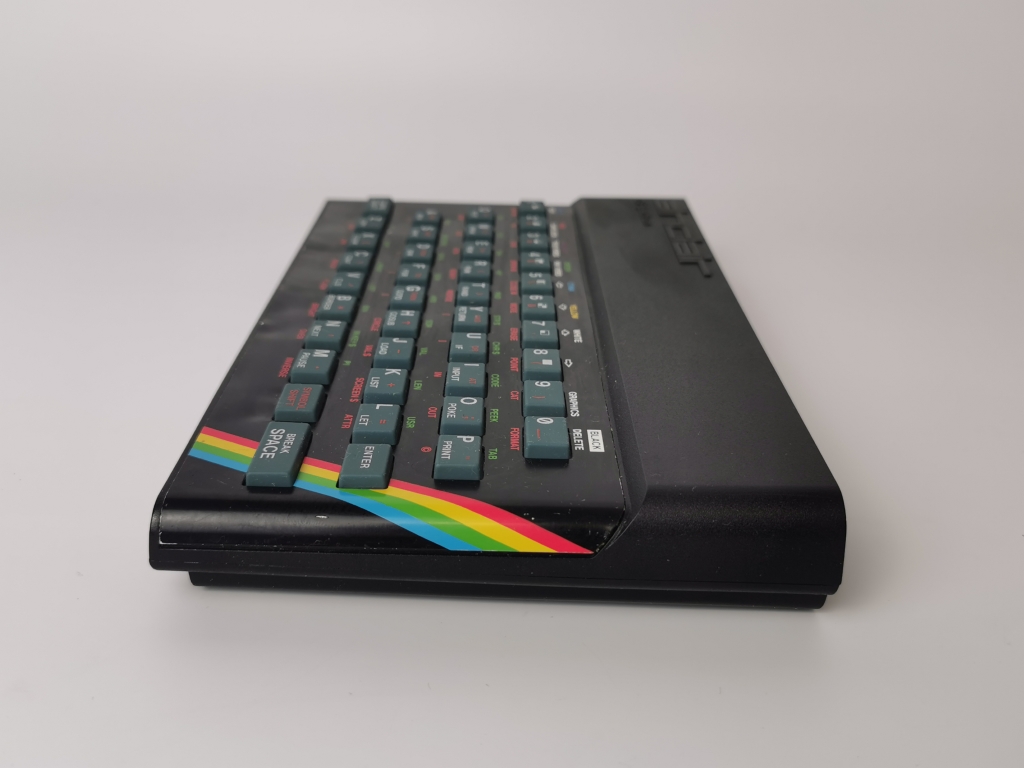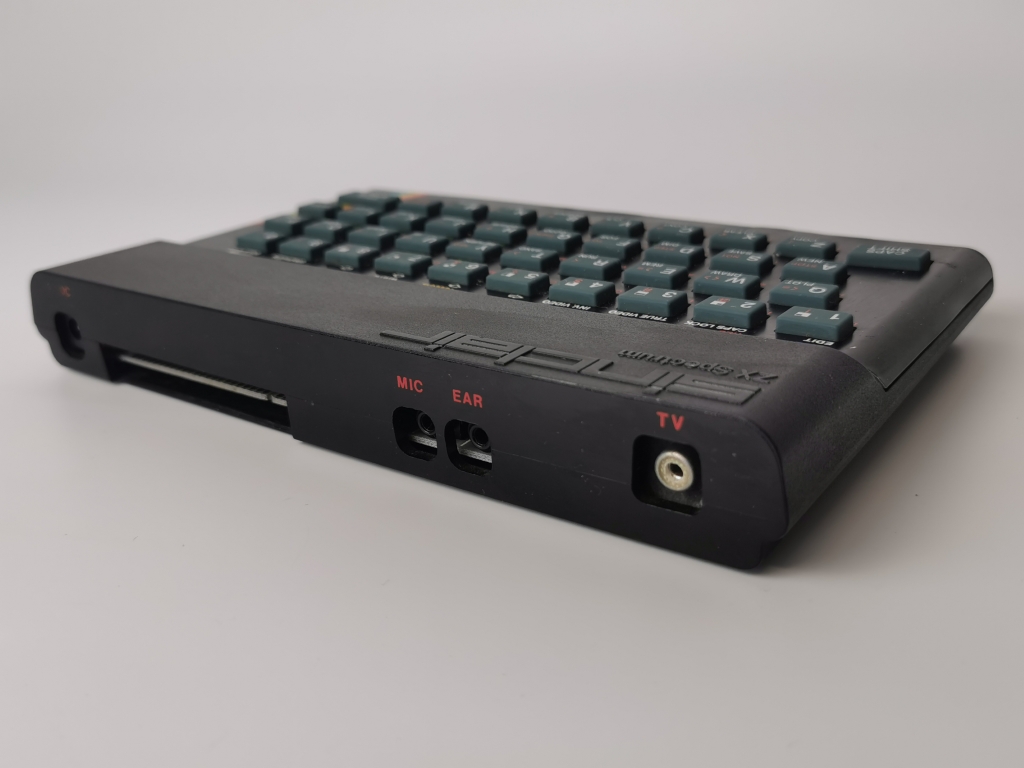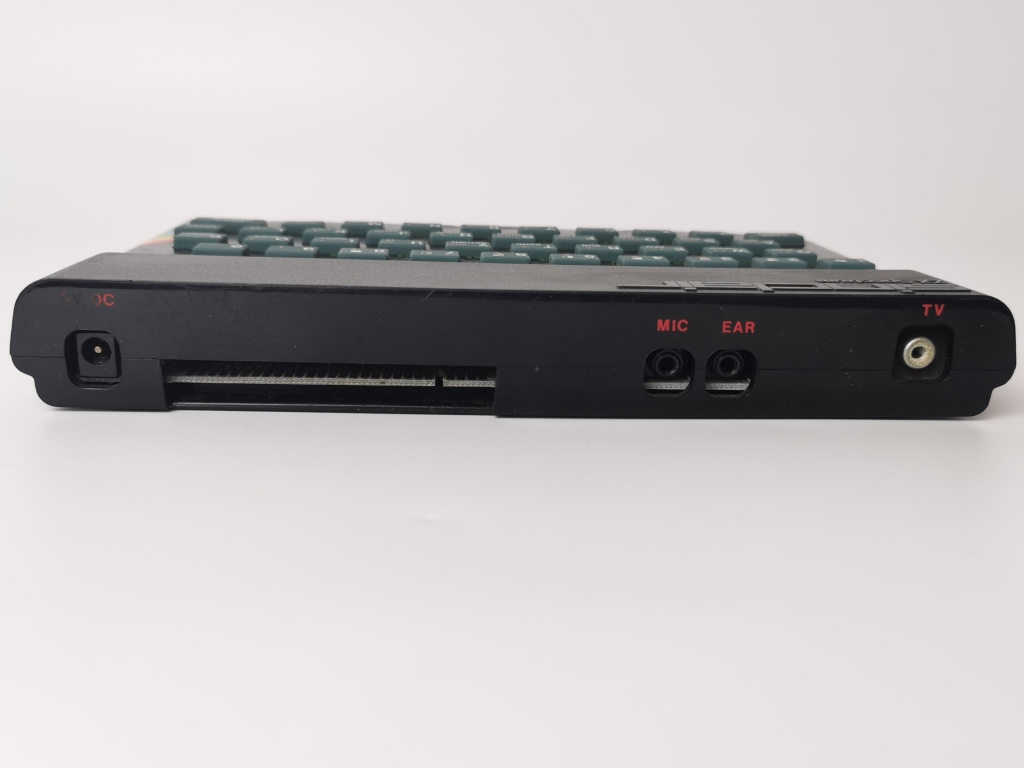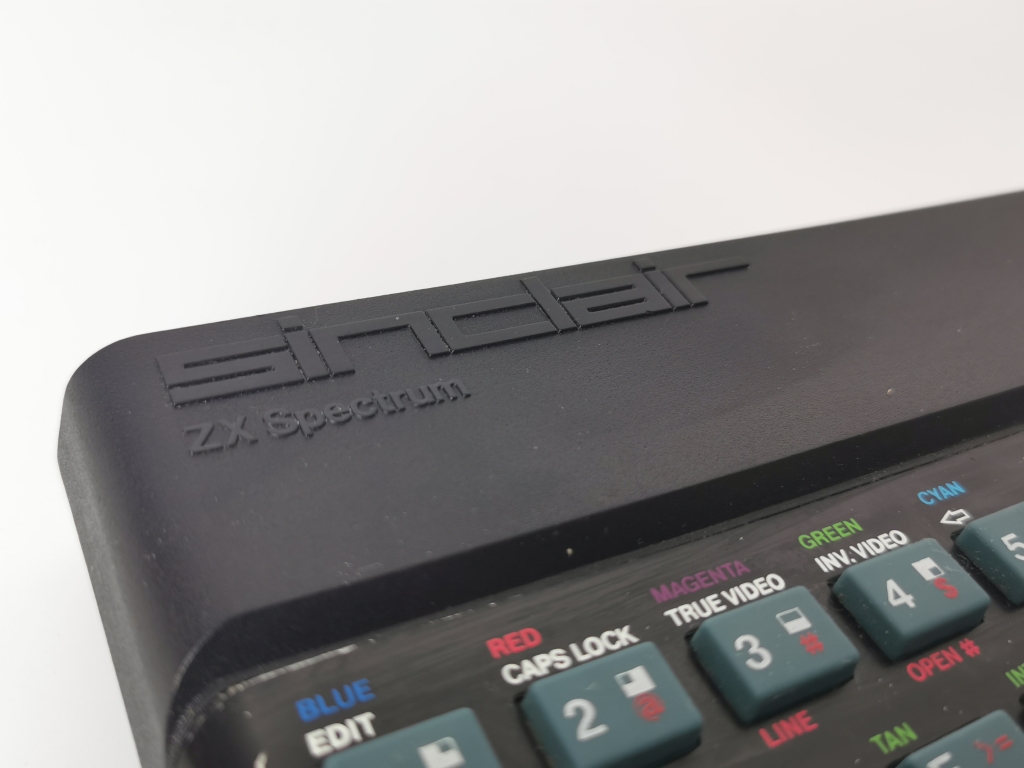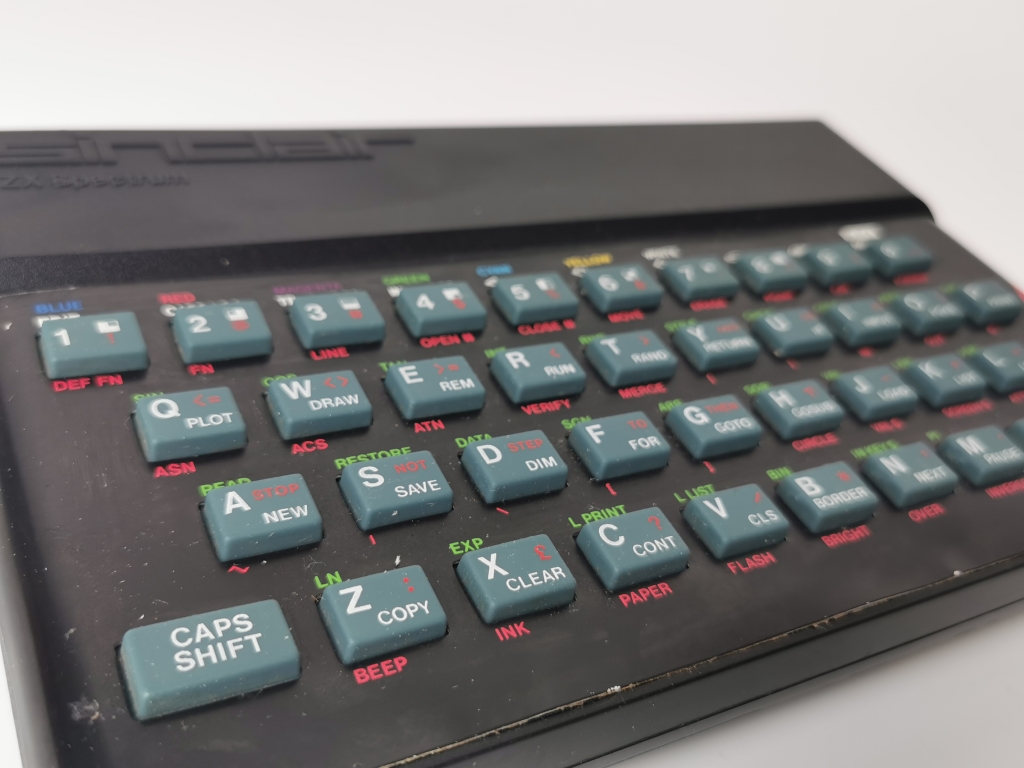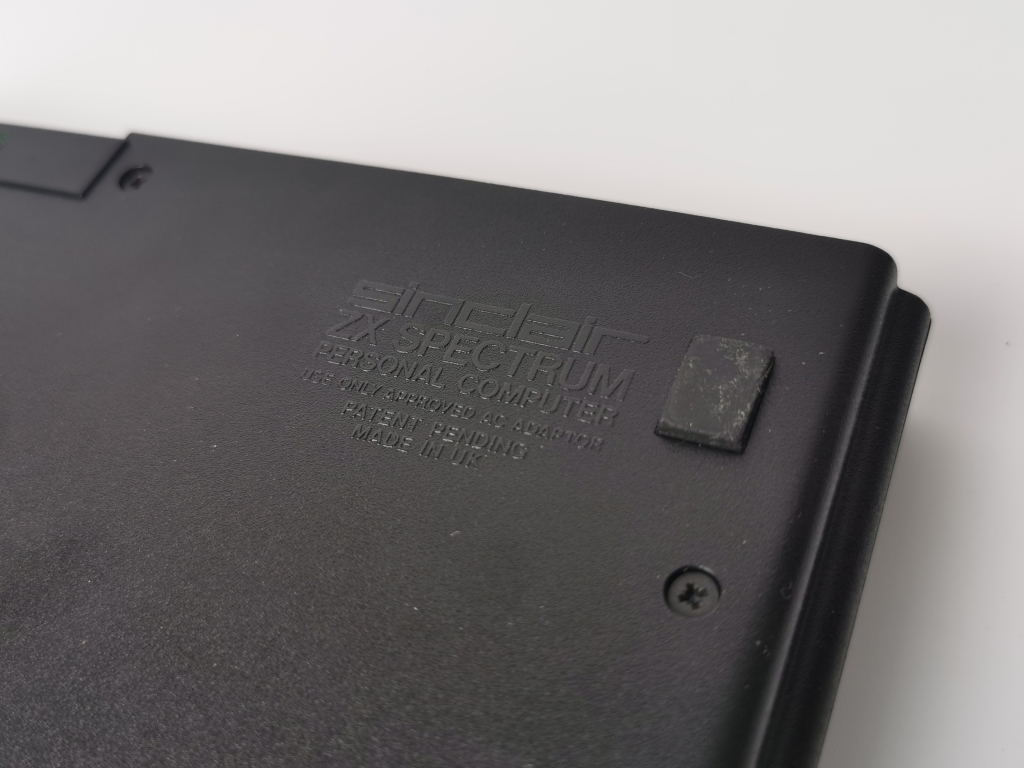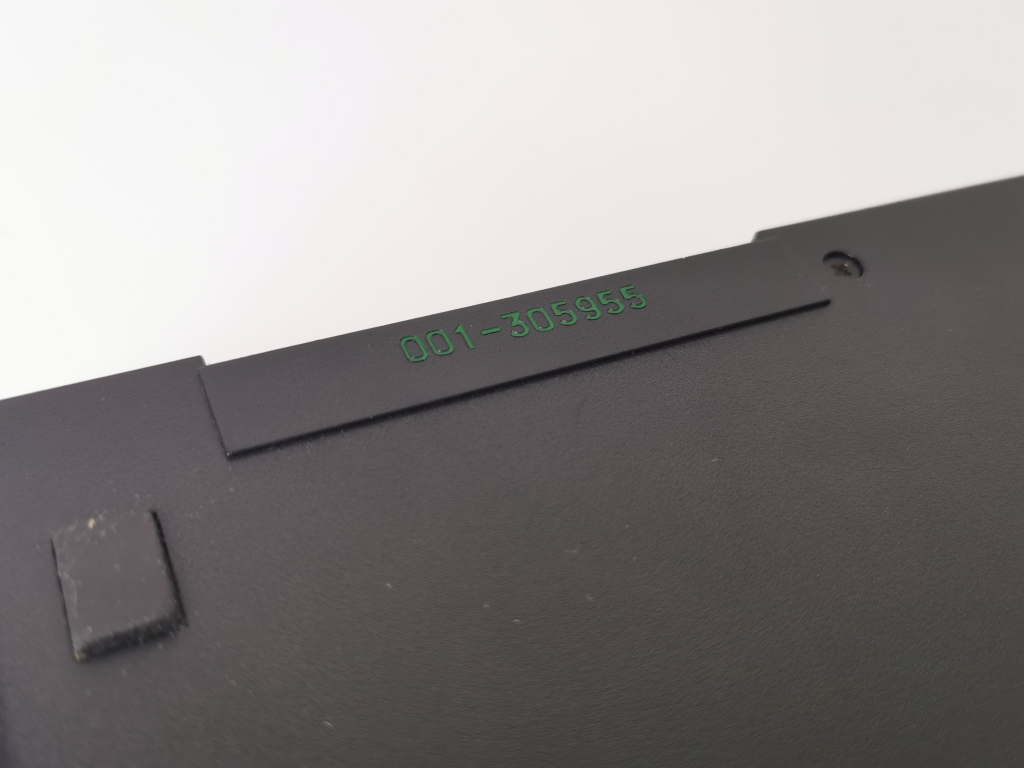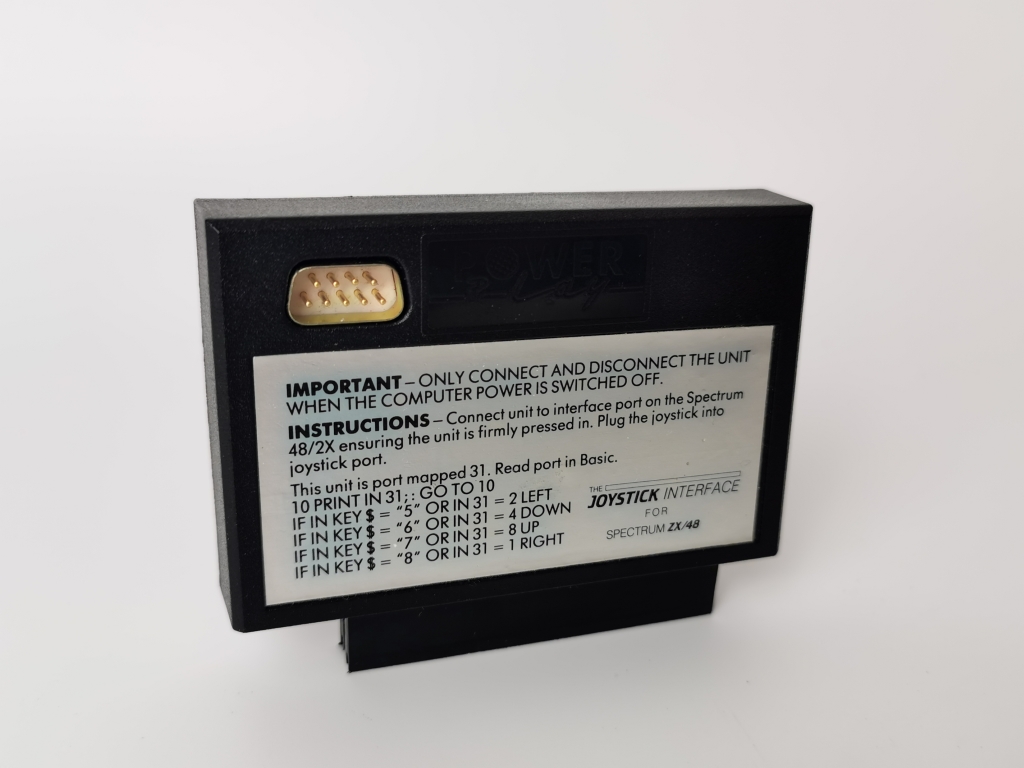The Original Spectrum is based on a Zilog Z80A CPU running at 3.5MHz. The original model Spectrum has 16KB of ROM and either 16KB or 48KB of RAM.
Video output is through an RF modulator and was designed for use with portable televisions, for a simple colour graphic display. Text can be displayed using 32 columns * 24 rows of characters from the ZX Spectrum character set, from a palette of 15 shades: seven colours at two levels of brightness each, plus black. The image resolution is 256*192 with the same colour limitations.
Sound output is through a beeper on the machine itself. This is capable of producing one channel with 10 octaves. The machine also includes an expansion bus edge connector and audio in/out ports for the connection of a cassette recorder for loading and saving programs and data.
The BASIC was developed from that used on the ZX81 and a ZX81 BASIC program can be typed into a Spectrum largely unmodified, but Spectrum BASIC included many extra features making it easier to use. The ZX Spectrum character set was expanded from that of the ZX81, which did not feature lower-case letters. Spectrum BASIC included extra keywords for the more advanced display and sound, and also supported multi-statement lines. The cassette interface was also much more advanced, saving and loading around four times faster than the ZX81, and much more reliably.
- Memory RAM : 16K or 48K
- Memory ROM : 16K
- CPU : Z80A @ 3.5MHz
- Display Resolution Text : 24 lines x 32 characters
- Display Resolution Pixels : 256 x 192
- Colours : 8
- OS Language : Sinclair BASIC
The industrial design for the original rubber-keyed ZX Spectrum and the plastic-keyed Spectrum+ was by Rick Dickinson, who had previously done the industrial design for the ZX80 and ZX81. One of the iconic elements of the design is the coloured stripes on the right side of its faceplate in the colours Red, Yellow, Green and Cyan.
The original ZX Spectrum is remembered for its Chiclet keyboard, (on top of a membrane, similar to calculator keys), diminutive size and distinctive rainbow motif.
The Spectrum features audio line in and out, in the form of an “ear” and “mic” socket. An external tape recorder was needed to load the majority of software released, or the ZX Microdrive. Either socket could be connected to headphones or an amplifier as an audio output, although this would not disable the internal speaker.
Sales of the Spectrum reached 200,000 in its first nine months, rising to 300,000 for the whole of the first year. By August 1983 total sales in the UK and Europe had exceeded 500,000.
The ZX Spectrum was officially discontinued in 1992.
The ZX Spectrum has enjoyed a resurgence in popularity thanks to the accessibility of ZX Spectrum emulators, allowing 1980s video game enthusiasts to enjoy classic titles without the long loading times associated with data cassettes. Over 20,000 titles have been released since the Spectrum’s launch and new titles continue to be released
